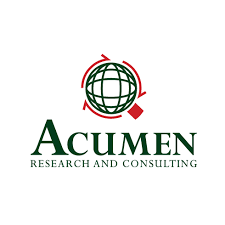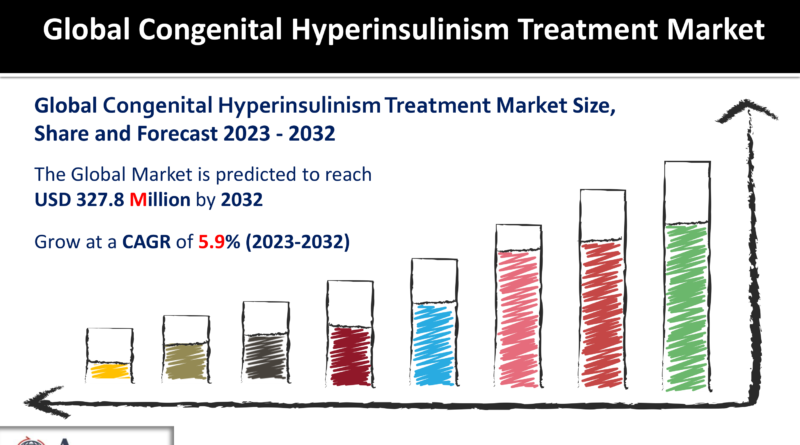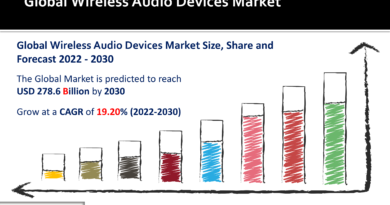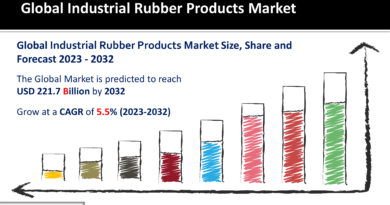Congenital Hyperinsulinism Treatment Market Size Forecast Between 2023-2032
The Congenital Hyperinsulinism Treatment Market Size amounted to USD 185.6 Million in 2022 and is anticipated to reach USD 327.8 Million by 2032, with a CAGR of 5.9% from 2023 to 2032.
Introduction
The Congenital Hyperinsulinism Treatment Market, a niche but vital sector in the healthcare industry, is undergoing a significant transformation. In this article, we will delve into the current market trends, drivers, restraints, opportunities, regional insights, competitive landscape, and future growth prospects in the field of Congenital Hyperinsulinism (HI) treatment. This rare genetic disorder affects infants and young children, causing their pancreas to secrete excessive insulin, potentially leading to severe hypoglycemia. Let’s explore the dynamics and key players in this essential market.
Download Free Congenital Hyperinsulinism Treatment Market Sample Report Here: (Including Full TOC, List of Tables & Figures, Chart)https://www.acumenresearchandconsulting.com/request-sample/3356
 Current Market Trends
Current Market Trends
Advancements in Diagnosis: With the increasing understanding of genetic factors contributing to Congenital Hyperinsulinism, more precise diagnostic methods have emerged, aiding early detection and treatment.
Personalized Therapies: Tailoring treatments to the specific genetic mutations responsible for HI is gaining prominence. This trend enhances treatment effectiveness and reduces side effects.
Gene Therapy: The field of gene therapy is showing promise in the treatment of HI, with ongoing research aimed at correcting the genetic mutations responsible for the condition.
Telemedicine and Remote Monitoring: The COVID-19 pandemic accelerated the adoption of telemedicine for managing HI patients, enabling remote monitoring and consultation with specialists.
Congenital Hyperinsulinism Treatment Market Segmentation
The worldwide market for congenital hyperinsulinism treatment is split based on disease type, drug type, route of administration, distribution channel, and geography.
Congenital Hyperinsulinism Treatment Disease Types
- KATP-HI
- GDH-HI
- GK-HI
- Others (SCHAD HI, HNF4A/HNF1A, etc.)
Congenital Hyperinsulinism Treatment Drug Types
- Diazoxide
- Glucagon
- Nifedepine
- Octerotide
- Other (Sirolimus, Chlorothiazide, etc.)
Congenital Hyperinsulinism Treatment Route of Administration
- Oral
- Parenteral
Congenital Hyperinsulinism Treatment Distribution Channels
- Hospital Pharmacies
- Online Pharmacies
- Retail Pharmacies
Market Drivers
Growing Incidence: The incidence of Congenital Hyperinsulinism is on the rise due to increased awareness and improved diagnostics.
Advancements in Genetic Research: Ongoing genetic research is uncovering new insights into the underlying causes of HI, paving the way for targeted treatments.
Government Initiatives: Government initiatives and healthcare policies aimed at rare diseases are encouraging research and development in this sector.
Patient-Centric Approach: The focus on personalized care and improved quality of life for HI patients is driving innovation in treatment methods.
Top Key Players:
Market Restraints
High Treatment Costs: The development of personalized therapies and gene-based treatments can be expensive, limiting accessibility for some patients.
Regulatory Hurdles: The regulatory pathway for novel treatments, especially gene therapy, can be complex and time-consuming.
Limited Awareness: Despite progress, there is still limited awareness about Congenital Hyperinsulinism among healthcare professionals and the general population.
Challenges in Diagnosis: Accurate diagnosis of HI can be challenging, leading to delayed treatment and potentially life-threatening complications.
Opportunities in the Congenital Hyperinsulinism Treatment Market
Global Expansion: The HI treatment market presents opportunities for global expansion as awareness grows and markets in different regions are explored.
Collaborations and Partnerships: Collaborations between pharmaceutical companies, research institutions, and healthcare organizations can lead to breakthroughs in treatment.
Telemedicine Integration: The integration of telemedicine and remote monitoring solutions can open up new avenues for patient care and consultations with HI specialists.
Regional Insights
The prevalence of Congenital Hyperinsulinism varies across regions, with North America and Europe leading in terms of research and treatment options. The Asia-Pacific region is emerging as a potential market with an increasing focus on rare diseases. Latin America and the Middle East are also witnessing slow but steady progress in HI treatment.
Competitive Landscape
Key Players: The Congenital Hyperinsulinism Treatment Market is currently dominated by key players like Novo Nordisk, Sanofi, and Roche. These companies are investing heavily in research and development to advance treatment options.
Emerging Companies: Several emerging companies, such as Orphan Biovitrum AB and Rezolute, are making significant strides in the HI treatment space, focusing on innovative therapies and gene-based approaches.
Research Institutions: Various research institutions and universities are actively engaged in research related to HI treatment, contributing to the expansion of the market.
Future Growth Prospects
The Congenital Hyperinsulinism Treatment Market holds substantial potential for growth. Advances in genetics and the development of targeted therapies are expected to revolutionize the treatment landscape. Moreover, increased global awareness and government support for rare diseases are likely to drive further innovation.
As the healthcare industry becomes more patient-centric, the HI market is poised for a patient-focused revolution. Treatments are likely to become increasingly personalized, minimizing side effects and optimizing outcomes. Gene therapy, in particular, holds great promise and may offer a potential cure for HI.
However, challenges remain, including regulatory complexities, the high cost of personalized treatments, and the need for greater awareness among healthcare professionals and the general public. Overcoming these challenges will be crucial to ensuring that all HI patients have access to the best possible care.
Get Discount On The Purchase Of This Report:https://www.acumenresearchandconsulting.com/buy-now/0/3356
Find more such market research reports on our website or contact us directly
Write to us at sales@acumenresearchandconsulting.com
Call us on +918983225533
or +13474743864



